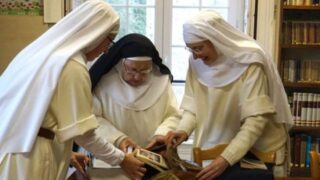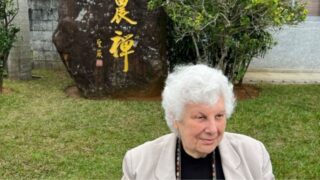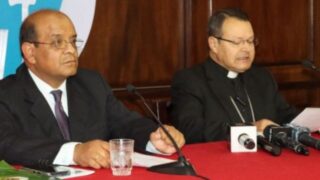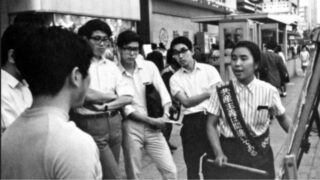Hidden for two centuries and a half, the persecuted Catholics re-emerged in 1865. Bitter Winter offers the first English translation of Pope Francis’ document celebrating them in 2015.
by Marco Respinti


At the core of the mission to Japan of US Navy Commodore, Matthew C. Perry (1794–1858), between 1852 and 1854, on a mandate from US President Millard Fillmore (1800–1874), lies the reopening of that Asian country to foreign trade in 1853, through the famous American “black ships” (from the color of the smoke produced by the coal-fueled steam engines of the vessels). This inaugurated the Japan’s Meiji Era, or the restoration of imperial rule after centuries of political division. It lasted until 1912, and its name comes from Emperor Meiji Mutsuhito (1852–1912).
Japan had in fact sealed itself in a rigid isolationist autarchy for 265 years, during the Tokugawa shogunate or Edo period, 1603–1868. Tokugawa Ieyasu (1543–1616) initially favored Christianity but later persecuted it. He officially established the shogunate that took his name (to be continued by his dynasty) on March 24, 1603, in the city of Edo (giving the name to the homonymous period in Japanese history), which today is Tokyo, the capital of Japan.
The Tokugawa shogunate and dynasty’s policy of strict isolationism became even harder when shōgun Tokugawa Iemitsu(1604–1651) declared Japan to be “Sakoku” (“chained country”) after the revolt of Shimabara in 1637. Christian converts—peasants and swordsmen alike—took arms against the persecution. Those who survived the carnage and others who escaped death became “Kakure Kirishitan,” the “hidden Christians” in the new Japanese “catacombs.” The recent assassination of former Japanese prime minister Abe Shinzō (1954–2022) prompted Bitter Winter to retell their story.
All missionaries had been exiled or killed. Converts were hunted and slaughtered. Persecution continued and intensified all along the Edo period. And soon the “hidden Christians” found themselves with no priests. So, for centuries they remained a secluded branch of Catholicism with no access to the sacraments, even developing their own rites. Their separate tradition survives curiously to this day.
Table of Contents
Back to Nagasaki
After the re-opening of the country by Commodore Perry, the Treaty of Amity and Commerce between Japan and the United States, signed on the very deck of one of the American “black ship,” USS Powhatan, on July 29, 1858, allowed foreigners to live again freely in Japan. A new wave of Christian missionaries—Catholic, Protestant and Orthodox—entered the country as well.


In 1863, Father Louis-Théodore Furet (1816–1900) and Father Bernard Petitjean (1829–1884) —the latter the future first apostolic vicar of Japan—, both Frenchmen of the Société des Missions Étrangères de Paris, arrived in Nagasaki, the historic center of Japanese Catholicism. They expressly intended to honor the first Catholic martyrs of Japan, killed during the persecution commanded by shōgun Toyotomi Hideyoshi (1537–1568). Regarded as the second “Great Unifier” of Japan, at first Toyotomi favored Christianity. Then he grew suspicious of “foreigners” and started persecution, even before the black period of the Tokugawa shogunate. On July 24, 1587, he issued the “Bateren Edict” banning all Christian missionary activities and the next year he ordered the slaughter. Japanese Jesuit Father Paolo Miki (1556 ca.– 1597) and his 25 companions were crucified in Nagasaki, and finished with a spear, on February 5, 1597.
The martyrology of the Catholic Church in Japan lists many others: 205 martyrs killed between 1617 and 1632, beatified on May 7, 1867, by Pope Pius IX (1792–1878); two Spanish Augustine Recollects, coming from Manila, in the Philippines, killed on December 11, 1632 and beatified on April 23, 1989, by Pope John Paul II (1920–2005); 16 Dominicans of the Holy Rosary Province of the Philippine, who were killed between 1633 and 1637, and canonized on October 18, 1987, also by John Paul II; Japanese Jesuit Father Petro Kasui Kibe (1587–1639) and other 187 priests and laymen killed between 1603 and 1639, and beatified on November 24, 2008, by Pope Benedict XVI.
The Pope and the celebration
The church that the two French missionaries built in Nagasaki for the first victims of anti-Catholicism in the country was finished in 1864 and consecrated as the Basilica of the Twenty-Six Holy Martyrs of Japan, also known as Ōura Church. On March 17, 1865, some 15 unknown Japanese asked Father Petitjean to open the door of the church for them. Once inside, a woman asked for the statue of Holy Mary, confessing to be Catholic. The group was a remnant of the Kakure Kirishitan, from the nearby village of Urakami. It was just the beginning. Thousands and thousands of “hidden Christians” came soon back to light. Pope Pius IX, reportedly, called it “the miracle of the Orient.”
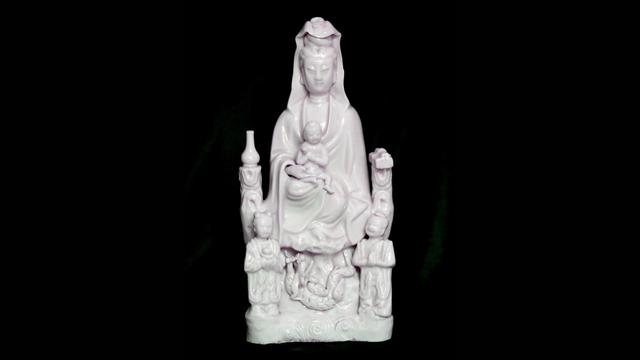

On March 14–17, 2015, the Catholic Church celebrated the 150th anniversary of that event. Cardinal Orlando Beltran Quevedo, archbishop of Cotabato, in the Philippines, served as Pope Francis’ special envoy to the celebration.
Japanese Catholics are indeed dear to Pope Francis. Speaking at the General Audience, in St. Peter’s Square, Vatican City, on January 14, 2014, within a brief cycle of catechesis on the Sacraments, he said: “On the subject of the importance of Baptism for the People of God, the history of the Christian community in Japan is exemplary. It suffered severe persecution at the start of the 17th century. There were many martyrs, members of the clergy were expelled and thousands of faithful killed. No priest was left in Japan, they were all expelled. Then the community retreated into hiding, keeping the faith and prayer in seclusion. And when a child was born, the father or mother baptized him or her, because the faithful can baptize in certain circumstances. When, after roughly two and a half centuries, 250 years later, missionaries returned to Japan, thousands of Christians stepped out into the open and the Church was able to flourish again. They survived by the grace of Baptism! This is profound: the People of God transmits the faith, baptizes her children and goes forward. And they maintained, even in secret, a strong communal spirit, because their Baptism had made of them one single body in Christ: they were isolated and hidden, but they were always members of the People of God, members of the Church. Let us learn a great deal from this history!”
Two pillars
Just after the above mentioned celebrations for the 150th anniversary of the rediscovery of the “hidden Christians,” on March 20, 2015, he said to the Bishops of the Catholic Episcopal Conference of Japan on their “ad limina” visit: “The Church in Japan has experienced abundant blessings but has equally known suffering. From those joys and sorrows, your ancestors in the faith have bequeathed to you a living heritage that adorns the Church today and encourages her journey toward the future. This heritage is rooted in the missionaries who first reached your shores and proclaimed the Word of God, Jesus Christ. We think especially of Saint Francis Xavier, his companions, and all those who through the years offered their lives in service of the Gospel and the Japanese people. For many of these missionaries, as well as for some of the first members of the Japanese Catholic community, their witness to Christ led to the shedding of their blood and, through this sacrifice, brought many blessings to the Church, strengthening the faith of the people. We recall especially Saint Paul Miki and companions whose steadfast faith in the midst of persecution became an encouragement for the small Christian community to persevere in every trial.”
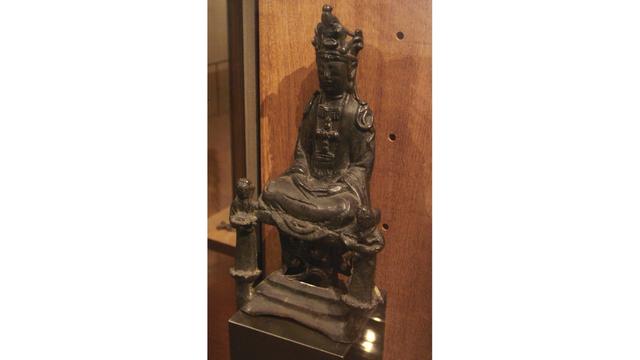

In the Pope’s view, these are the “two pillars of Catholic history in Japan,” “missionary activity and the ‘hidden Christians,’” and they “continue to support the life of the Church today, and offer a guide to living the faith.”
On the Kakure Kirishitan, the Pope also commented: “This year you celebrate another facet of this rich heritage—the emergence of the ‘hidden Christians.’ Even when all lay missionaries and priests had been expelled from the country, the faith of the Christian community did not grow cold. Rather, the embers of faith which the Holy Spirit ignited through the preaching of these evangelizers and sustained by the witness of the martyrs were kept safe, through the care of the lay faithful who maintained the Catholic community’s life of prayer and catechesis in the midst of great danger and persecution,” pointing at them as reminders of the fact “that the work of fostering the life of the Church and of evangelizing require the full and active participation of the lay faithful.”
A third document on the subject is relevant: the official letter that Pope Francis sent to Cardinal Quevedo on February 15, 2015, in sight of the 150th anniversary celebration. It was written in Latin. Since no English version seems to exist, here below Bitter Winter offers a full English translation of that document, probably the only one available to date. In fact, if in the Pope’s view the epic tale of the “hidden Christians” of Japan indicates that “[i]f our missionary efforts are to bear fruit, the example of the ‘hidden Christians’ has much to teach us” (this is again from his speech of March 20, 2015). The struggle for religious liberty, as that fought by the Catholics in Japan, is really the epistyle of every humane society.


The Letter of Pope Francis in English
“The faithful, inhabiting Japan’s beloved country, solemnly celebrate the 150 anniversary of the discovery of Christians who secretly continued their 250-year spiritual journey and carefully kept the words of the Lord in their hearts, carefully handing over the treasure of faith for generations and generations. We specifically commemorated them at the General Audience in January of last year, discussing the harassment against the Church in Japan and the testimony of martyrs, which is of great importance even in today’s world. Since that time, in Japan remained no priest. When the missionaries returned, many Christians, once hidden, revealed themselves again openly by demonstrating their unique faith, hope and charity.
On the occasion of this anniversary, many projects are being carried out in Japan so that all, remembering the example of those faithful, clearly praise the generosity of the Savior and experience an incentive for a renewed life to be followed in the light of Christ.
For this reason, both our Venerable Brother Peter Takeo Okada, Metropolitan Archbishop of Tokyo and President of the Episcopal Conference of Japan, and our Venerable Brother Joseph Mitsuaki Takami, P.S.S., Metropolitan Archbishop of Nagasaki, wrote us very cordial letters, inviting us to this celebration. Fully grateful for this invitation, which we hold in our heart, we are now seeking some eminent man who will represent us in Nagasaki and show our love for the disciples of Christ who live there.
To you, our Venerable Brother, who prudently moderate the Metropolitan Church of Cotabato, now we turn our attention and with this letter we appoint you as our Extraordinary Envoy to participate in the festivities that will be held in the city of Nagasaki City, March 14 to 17, next year.
In our name, you will preside the celebration of the Eucharist and will greet the renowned Archbishops and other sacred prelates, priests, religious men and women, public authorities, and all members of the Christian community. Through your word, encourage all those present to be a constant imitation of the life of Christ. Finally, we hope that all will shine in faith in their daily lives, by reflecting on the moving history of the Church in Japan and on the testimony of so many Christians who demonstrated a unique love for Christ’s Church and the Gospel, through the intercession of Blessed Petro Kasui Kibe and its 187 martyrs companions.
We will accompany you, our Venerable Brother, with prayers in fulfilling your mission. At last, we gladly impart you the Apostolic Blessing, a sign of our benevolence toward you and the pledge of the heavenly gifts, which you will lovingly transmit to all the participants in the celebration.”


